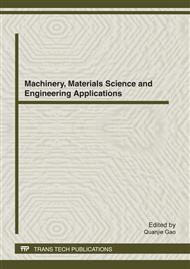p.478
p.484
p.490
p.495
p.500
p.507
p.512
p.516
p.520
Experimental Study on the Response Characteristics of Oilcans under High-Velocity Fragment Impact
Abstract:
To explore the deflagration possibility of the warship cabin filled with fuel oil under impact of high-speed fragments in the condition of room temperature, experiments were carried out employing the small aluminium oilcans filled with fuel oil. Response processes of the oilcans were observed with the help of a high-speed camera. The disintegration as well as flying scattering of the oilcans were analyzed. The reasons for atomization of the fuel oils were presented. Finally, the deflagration possibility of warship oil cabin was analyzed. Results show that the pressure inside the oilcan is quite great under the impact of the high-speed fragment, which makes the oilcan disintegration and flying scattering. Simultaneously, fuel oils inside the oilcans are atomized quickly followed by ejected in front and back directions. Under the same condition as in present tests, deflagration will not occur for fuel oils used by warships. Experimental results will provide valuable references for the deflagration analysis of warship fuel oil cabins subjected to the impact of high-velocity fragments.
Info:
Periodical:
Pages:
500-506
Citation:
Online since:
April 2012
Authors:
Keywords:
Price:
Сopyright:
© 2012 Trans Tech Publications Ltd. All Rights Reserved
Share:
Citation:


